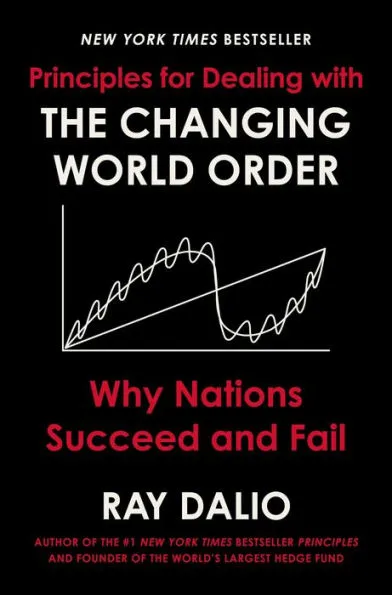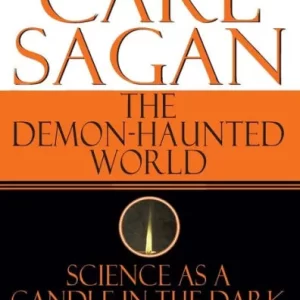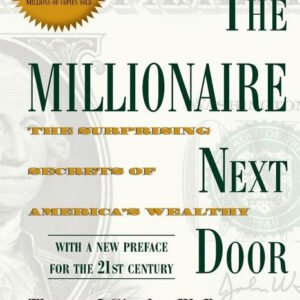I. Introduction
Understanding the intricacies of global dynamics is paramount in navigating the complexities of the modern world. “Principles for Dealing with the Changing World Order” by Ray Dalio offers invaluable insights into this domain, shedding light on the evolving landscape of international relations, economics, and geopolitics.
A. Overview of the Book
Dalio’s book serves as a comprehensive guide for individuals and organizations seeking to comprehend the shifting dynamics of the global stage. Through meticulous analysis and astute observations, Dalio elucidates the underlying principles that govern the world order, offering readers a framework for understanding the interconnectedness of various geopolitical and economic factors.
B. Introduction to Ray Dalio
Ray Dalio is a prominent figure in the world of finance and investment, renowned for his expertise in macroeconomic analysis and his founding of Bridgewater Associates, one of the world’s largest hedge funds. With decades of experience in navigating the volatile currents of global markets, Dalio brings a wealth of knowledge and insight to his exploration of the changing world order.
C. Importance of Understanding Changing World Order
In an era marked by rapid globalization, technological advancement, and geopolitical realignments, the ability to grasp the dynamics of the changing world order is indispensable. Whether in the realm of business, politics, or diplomacy, individuals and institutions must adapt to emerging trends and anticipate future challenges. By delving into Dalio’s principles, readers gain a deeper understanding of the forces shaping our world and are better equipped to navigate its complexities.
II. Summary of “Principles for Dealing with the Changing World Order” (300 words)
A. Main Themes and Arguments:
In “Principles for Dealing with the Changing World Order,” Ray Dalio delves into the complexities of global dynamics and offers insights into navigating the shifting landscape of international relations. One of the main themes revolves around the inevitability of change in the world order and the necessity for individuals and nations to adapt to these transformations. Dalio emphasizes the importance of understanding historical patterns and geopolitical forces that shape the current state of affairs.
B. Key Concepts and Principles Explored:
Central to Dalio’s analysis is the concept of paradigm shifts, where he identifies key periods of transition throughout history that have redefined global power dynamics. He explores the role of empires, reserve currencies, and technological advancements in shaping the trajectory of nations. Additionally, Dalio introduces principles such as diversification, pragmatism, and humility as essential tools for effectively navigating the complexities of the global landscape.
C. Dalio’s Approach to Analyzing World Dynamics:
Dalio employs a systematic approach to analyze world dynamics, drawing from his extensive experience in financial markets and macroeconomic trends. He emphasizes the interconnectedness of various factors including politics, economics, and culture in shaping international relations. Furthermore, Dalio advocates for a holistic understanding of competing ideologies and interests to anticipate potential conflicts and opportunities in the global arena.
Overall, “Principles for Dealing with the Changing World Order” provides a comprehensive framework for individuals and policymakers to navigate the uncertainties of the modern world. By recognizing the inevitability of change and embracing adaptability, Dalio argues that individuals can thrive amidst evolving geopolitical landscapes.
III. Analysis of Dalio’s Framework
A. Evaluation of Dalio’s Understanding of Global Dynamics
Ray Dalio’s “Principles for Dealing with the Changing World Order” offers a comprehensive perspective on global dynamics, rooted in his extensive experience in financial markets and macroeconomic analysis. Dalio’s understanding of global dynamics is commendable, as he delves into the interplay of economic, political, and social forces shaping the contemporary world order.
Dalio correctly identifies key drivers of change, such as technological advancements, shifting demographics, and geopolitical tensions. His recognition of the interconnectedness of these factors reflects a nuanced understanding of the complexities inherent in global dynamics. Moreover, Dalio’s emphasis on the cyclical nature of history and the recurrence of certain patterns adds depth to his analysis.
However, one potential limitation of Dalio’s understanding lies in his predominantly economic perspective. While economic factors undoubtedly play a significant role, global dynamics encompass a broader spectrum of influences, including cultural, environmental, and technological dimensions. A more interdisciplinary approach could enrich Dalio’s framework and offer a more holistic understanding of the forces shaping the world order.
B. Discussion of the Principles for Success and Failure
Dalio outlines a set of principles for navigating the changing world order, drawing upon insights gleaned from historical precedents and contemporary observations. His principles for success, such as embracing reality and remaining adaptable, resonate with timeless wisdoms of strategic thinking and resilience. By emphasizing the importance of continuous learning and flexibility, Dalio provides actionable guidance for individuals and organizations seeking to thrive amidst uncertainty.
Conversely, Dalio’s principles for failure underscore the dangers of complacency, closed-mindedness, and shortsightedness. His admonition against falling prey to excessive debt and leverage reflects a keen awareness of the pitfalls that have historically precipitated downfall. By highlighting these potential pitfalls, Dalio equips readers with the awareness necessary to avoid common traps and pitfalls in an ever-evolving landscape.
C. Critique of Dalio’s Methodology and Assumptions
While Dalio’s framework offers valuable insights, it is not without its shortcomings. One notable critique pertains to the inherent subjectivity of his methodology. Dalio’s analysis is informed by his own experiences and biases, which may limit the generalizability of his findings. Moreover, his reliance on historical analogies and cycles may overlook the unique contingencies of the present moment.
Furthermore, Dalio’s assumptions regarding the predictability of global dynamics warrant scrutiny. While he espouses a deterministic view of history, characterized by recurring patterns and cycles, the nonlinear nature of complex systems suggests that outcomes are inherently uncertain. By acknowledging the limits of predictive capacity, Dalio’s framework could more effectively account for the inherent unpredictability of global dynamics.
In conclusion, Ray Dalio’s “Principles for Dealing with the Changing World Order” offers a valuable contribution to the discourse on global dynamics. While his understanding is insightful and his principles are actionable, his framework would benefit from a more interdisciplinary approach and a critical examination of underlying assumptions. By embracing complexity and uncertainty, Dalio’s framework can better equip individuals and organizations to navigate the complexities of our rapidly evolving world.
IV. Case Studies and Examples
A. Illustrative Examples of Nations Succeeding and Failing
In “Principles for Dealing with the Changing World Order,” Ray Dalio underscores the significance of understanding how nations navigate the complexities of the global landscape. Through illustrative examples, Dalio elucidates instances where nations have either succeeded or failed in adapting to shifting world dynamics.
One compelling example of a nation succeeding amidst changing global conditions is Singapore. Despite its small size and lack of natural resources, Singapore has emerged as a global economic powerhouse. Through strategic investments in education, infrastructure, and technology, Singapore transformed itself from a third-world country to a first-world economy within a single generation. Its success story serves as a testament to the importance of adaptability, innovation, and proactive policymaking in navigating the evolving world order.
Conversely, Venezuela stands as a cautionary tale of a nation grappling with economic and political turmoil. Despite its vast oil reserves, Venezuela’s over-reliance on oil exports left its economy vulnerable to fluctuations in global oil prices. Mismanagement, corruption, and political instability further exacerbated its economic woes, leading to hyperinflation, widespread poverty, and social unrest. Venezuela’s failure to diversify its economy and implement sustainable economic policies underscores the perils of complacency and shortsightedness in a rapidly changing world.
B. Application of Dalio’s Principles to Real-World Scenarios
Dalio’s principles provide a valuable framework for analyzing and understanding real-world scenarios across diverse geopolitical contexts. For instance, the principle of “diversification” emphasizes the importance of spreading risk and avoiding over-reliance on a single source of strength or vulnerability. This principle can be applied to countries like Saudi Arabia, which heavily depends on oil revenues. By diversifying its economy and investing in sectors beyond oil, Saudi Arabia can mitigate the risks associated with fluctuations in oil prices and evolving global energy dynamics.
Similarly, the principle of “adaptation” underscores the necessity of embracing change and proactively responding to evolving circumstances. South Korea’s rapid industrialization and technological advancement exemplify successful adaptation to changing global trends. Through strategic planning, investment in human capital, and fostering a culture of innovation, South Korea transformed itself from a war-torn nation to a global leader in technology and innovation.
C. Examination of Historical and Contemporary Events
By examining historical and contemporary events through the lens of Dalio’s principles, one gains deeper insights into the underlying drivers of global dynamics. From the collapse of the Soviet Union to the rise of China as an economic superpower, historical events offer valuable lessons on the interplay between geopolitical forces, economic policies, and societal changes. Likewise, contemporary events such as the COVID-19 pandemic underscore the interconnectedness of nations and the imperative of international cooperation in addressing global challenges.
In conclusion, through illustrative examples, real-world applications, and historical analyses, Dalio’s principles provide a comprehensive framework for understanding and navigating the complexities of the changing world order. By drawing insights from both successful and failed examples, policymakers, analysts, and stakeholders can better anticipate challenges, identify opportunities, and formulate effective strategies for the future.
V. Relevance and Implications
A. Implications for Policymakers and Business Leaders
Ray Dalio’s “Principles for Dealing with the Changing World Order” offers crucial insights for policymakers and business leaders alike. In a world characterized by rapid transformations and geopolitical shifts, Dalio’s principles emphasize the necessity of adaptability and foresight. Policymakers can benefit from his framework by crafting policies that acknowledge the fluid nature of international relations and anticipate potential disruptions. By understanding the underlying principles of Dalio’s work, policymakers can navigate complex geopolitical landscapes more effectively, fostering stability and cooperation.
Similarly, business leaders can glean valuable lessons from Dalio’s principles to inform strategic decision-making. The interconnectedness of global markets demands a nuanced understanding of geopolitical dynamics. By integrating geopolitical analysis into their strategic planning processes, business leaders can identify emerging opportunities and mitigate risks associated with geopolitical instability. Moreover, Dalio’s emphasis on diversification and resilience underscores the importance of building flexible organizational structures capable of weathering geopolitical shocks.
B. Reflection on the Changing World Order in the 21st Century
Dalio’s exploration of the changing world order prompts reflection on the evolving dynamics shaping the 21st century. The rise of new economic powers, technological advancements, and shifting alliances are redefining traditional notions of power and influence. In this context, understanding the underlying drivers of global change is essential for anticipating future trends and navigating uncertainty. Dalio’s insights encourage stakeholders to adopt a forward-thinking mindset, embracing change as an opportunity for growth and innovation.
C. Importance of Adapting Strategies in a Dynamic Global Landscape
The dynamic nature of the global landscape necessitates continuous adaptation and strategic agility. Dalio’s principles underscore the importance of remaining adaptable in the face of uncertainty, advocating for a proactive approach to risk management. By embracing flexibility and resilience, organizations can position themselves to thrive amidst evolving geopolitical realities. Furthermore, Dalio’s emphasis on collaboration and understanding highlights the interconnected nature of global challenges, emphasizing the need for collective action to address complex issues.
In conclusion, “Principles for Dealing with the Changing World Order” offers invaluable insights for navigating the complexities of the 21st-century global landscape. By incorporating Dalio’s principles into policymaking and strategic planning processes, stakeholders can better position themselves to navigate uncertainty and seize emerging opportunities.
VI. Criticisms and Limitations
A. Identification of Weaknesses in Dalio’s Argument:
Ray Dalio’s “Principles for Dealing with the Changing World Order” presents a comprehensive framework for understanding global dynamics, yet it is not without its weaknesses. One significant weakness lies in Dalio’s tendency to oversimplify complex geopolitical situations. His principles, while valuable as general guidelines, may not adequately address the intricacies of individual nation-states’ behaviors and interactions. Moreover, Dalio’s deterministic view of history and the world order fails to account for the role of human agency and the unpredictability of geopolitical events.
B. Discussion of Blind Spots or Overlooked Factors:
One notable blind spot in Dalio’s analysis is the insufficient consideration of cultural and historical factors influencing international relations. While he emphasizes economic and power dynamics, he often overlooks the significance of cultural differences, historical grievances, and identity politics in shaping geopolitical outcomes. Furthermore, Dalio’s framework tends to prioritize economic indicators over social and environmental factors, neglecting the interconnectedness of these dimensions in shaping global dynamics.
C. Consideration of Alternative Perspectives:
Alternative perspectives to Dalio’s framework include postcolonial and feminist analyses, which highlight the unequal distribution of power and resources perpetuated by the current world order. These perspectives challenge the notion of a linear progression towards a more stable global system, emphasizing instead the persistence of systemic injustices and marginalization. Additionally, scholars advocating for a multipolar world order offer a different vision from Dalio’s emphasis on the rise and fall of empires, suggesting that power is distributed among multiple actors rather than concentrated in a few dominant nations.
In conclusion, while Ray Dalio’s principles offer valuable insights into navigating the changing world order, they are not immune to criticism. By identifying weaknesses, addressing blind spots, and considering alternative perspectives, scholars can enrich the discourse on global dynamics and contribute to more nuanced understandings of contemporary geopolitics.
VII. Conclusion
A. Recap of Key Points and Findings
“Principles for Dealing with the Changing World Order” by Ray Dalio offers a comprehensive analysis of global dynamics, emphasizing the importance of historical patterns, economic cycles, and power shifts. Dalio elucidates key principles such as understanding the long-term debt cycle, the rise and fall of empires, and the role of reserve currencies in shaping the world order.
B. Assessment of the Book’s Contribution to Understanding Global Dynamics
Dalio’s book significantly contributes to our understanding of global dynamics by providing a framework to interpret historical events and anticipate future trends. His insights into the interplay between economics, politics, and geopolitics offer valuable perspectives for policymakers, investors, and scholars alike.
C. Final Thoughts on the Practical Utility of Dalio’s Principles
While Dalio’s principles offer valuable insights, their practical utility may vary depending on the context and the complexity of global events. Implementing these principles requires careful analysis and adaptation to specific circumstances. Nevertheless, Dalio’s approach encourages readers to adopt a broader perspective on global dynamics and develop robust strategies for navigating an ever-changing world order.
In conclusion, “Principles for Dealing with the Changing World Order” serves as a valuable resource for anyone seeking to understand and navigate the complexities of our interconnected world. Dalio’s insights prompt readers to rethink conventional wisdom and adapt to the evolving landscape of global affairs.



